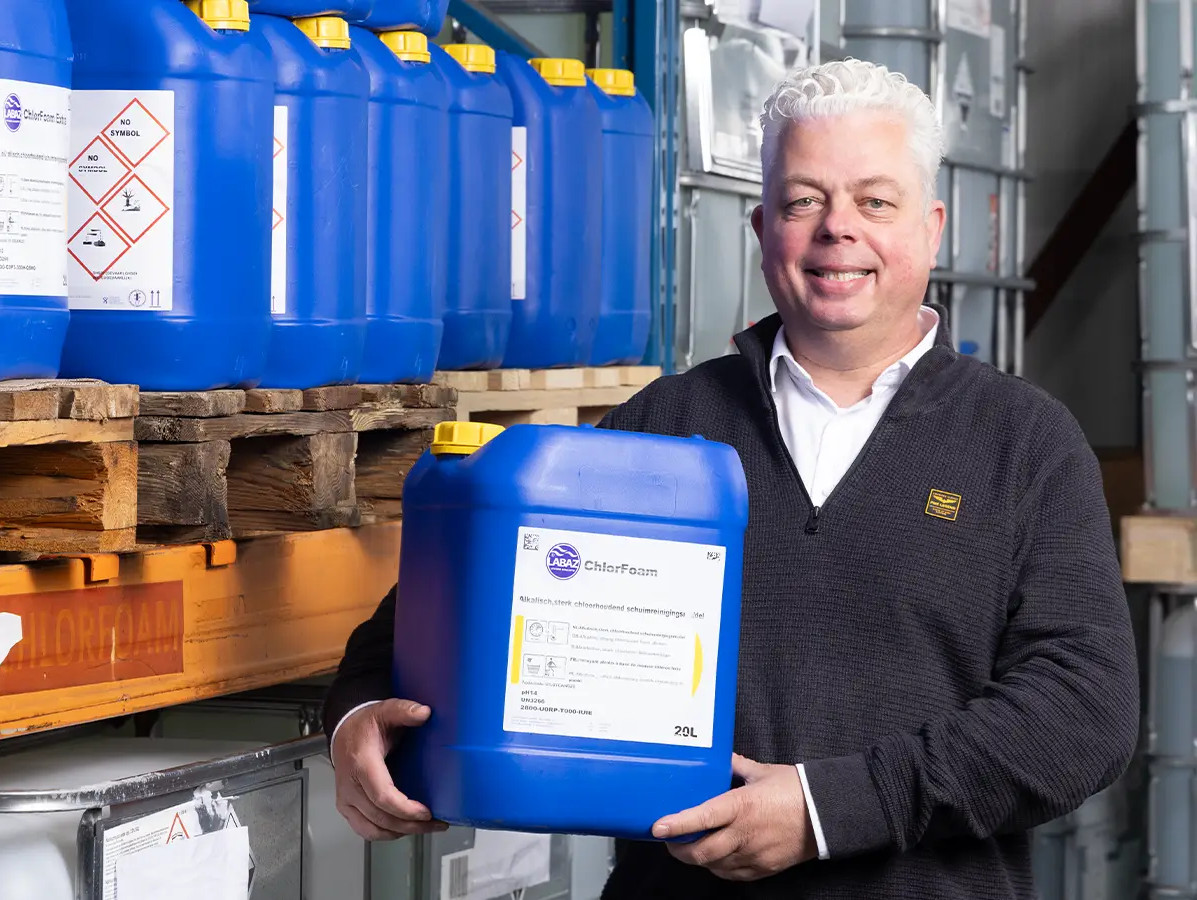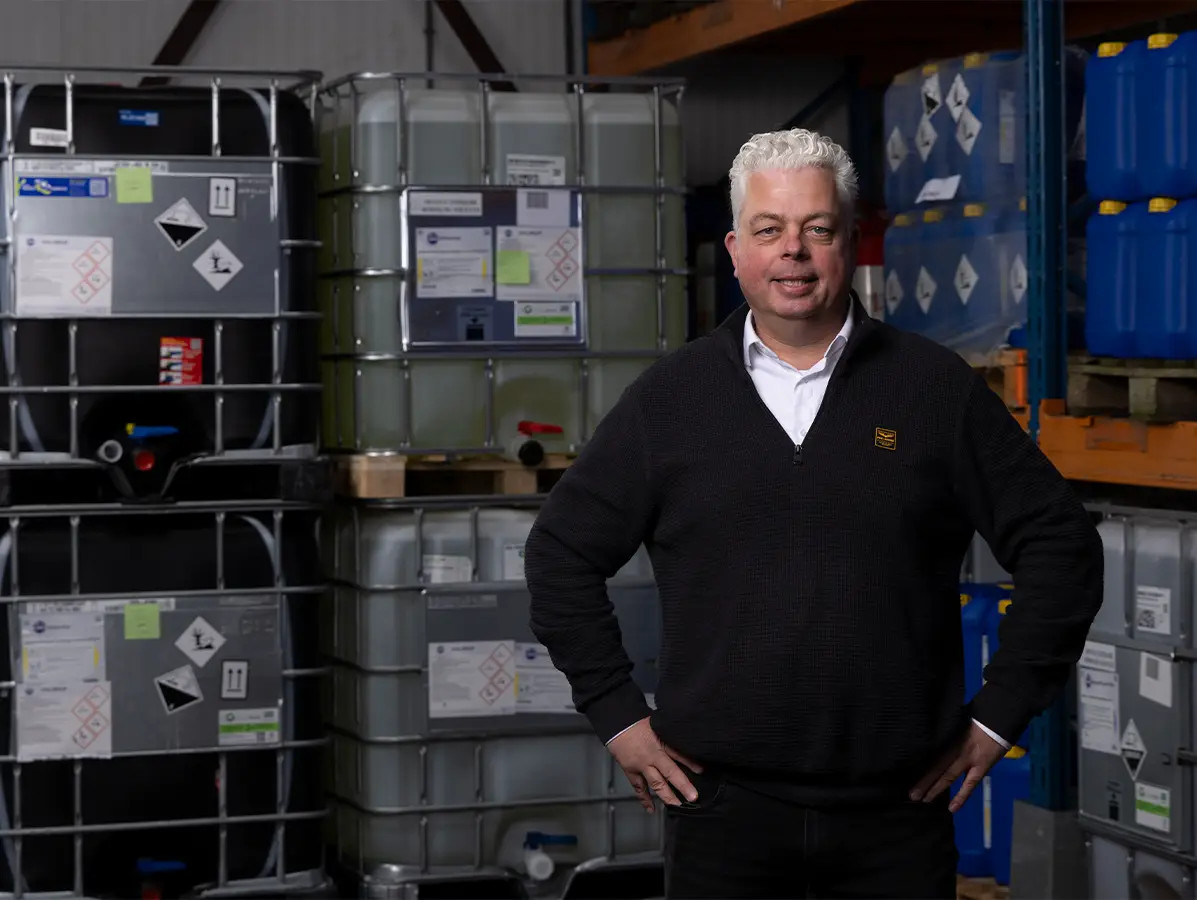
Awareness around food safety is growing in the Netherlands, observes Rob Kamphuis, hygiene specialist and owner of Labaz Hygiëne Concepts. “In general, we have things well organised here,” he says. “Food producers say food safety is very important to them. They want to avoid recalls.” But there’s another side to the story. “Everything needs to be done as cheaply as possible. That poses a potential risk.”
“If you don’t have your hygiene processes in order as a food producer, you could face serious claims. There are plenty of examples of companies that ran into financial trouble after a food safety incident—and some didn’t survive it.” Hygiene in food is clearly his passion. Talk to Rob Kamphuis about the topic, and in his distinctive and pleasant Twents accent, you’ll be met with a stream of anecdotes. His whole body gets involved when he wants to emphasise his points. And there’s plenty to talk about. Even though food safety in the Netherlands is, as he says, ‘pretty solid,’ there’s still work to be done.
“As a food processor, you need to have all your processes in order—especially when it comes to food safety,” Rob says. “It’s not enough to follow procedures just because they’re written down somewhere. You need to lock them in. Why are you doing it that way? I want to understand how someone decided on a specific cleaning protocol. Unfortunately, I rarely get a clear answer to that. When I ask, the typical response is: ‘We’ve been doing it this way for years… so it must be fine.’ But the world changes. You have to adapt with it, right?”
“People go through certain routines every day, and that’s exactly where mistakes can sneak in. One thing I see a lot is that while there’s high-pressure spraying with long lances, people forget to clean less visible spots—like the bottom and back of worktops. And the final rinse often isn’t done thoroughly, so soap residues are left behind.”
“Another common problem is the cleaning order. Pre-rinsing should go from top to bottom, and foaming from bottom to top. But I regularly see it the other way round: the floor looks clean, but meat residues are stuck high up on the walls or even the ceiling. And then there’s this: there’s a brand-new car in the parking lot, but the foam equipment used for dosing cleaning agents is falling apart and ready for the scrapheap.”
“I’m calling for stronger collaboration between food producers, chemical suppliers, the NVWA, and external auditors.”

“I believe there should be tighter collaboration between the food producer and the chemical supplier, with input from the NVWA and external auditors. Those three parties need to operate as one. That’s where it often goes wrong. During an audit—internal or external—the client usually gets some kind of explanation or reasoning. But the NVWA simply issues a statement. ‘This is not acceptable.’ Okay, but how should it be done? They don’t tell you.”
He pauses briefly before continuing: “Look, it’s not about being right. It’s about safeguarding food safety. If the NVWA or the auditor has a valid point for whatever reason, then that should be the standard. But there’s rarely space for dialogue or knowledge-sharing. I get that the NVWA doesn’t have time to attend every meeting. And I know they’re a government body, not a consultancy firm. Still, I believe this is a real risk. If auditors or inspectors don’t explain why something’s not right, manufacturers lose interest. They’ll think: ‘This is all so vague… whatever.’ That’s a major pitfall.”
“That brings me back to the importance of validation. In most cases, users of cleaning and disinfecting agents follow the manufacturer’s instructions blindly. For instance, a manufacturer might recommend a 20-minute soak time for a particular solution. But in reality, that might be too long—or too short—for optimal results. Every facility is different. And most of the time, the only check done is a few swab tests at the very end of the cleaning process, after rinsing. Usually at the same spots. If those results look good, they think everything is under control. But I would recommend measuring at different times during the process, and in different places. You might discover that rinsing is being done with water that’s too cold. Or that the cleaning solution is too concentrated—or not suitable for the type of residue—and that you need a longer rinse. The disinfecting step might just be masking the problem enough to get by. Ideally, I’d like to verify every single cleaning step for every client. Especially in CIP systems (Cleaning in Place), because those are hidden. You have to measure, validate, and secure those steps.”
“When the conversation turns to pricing, the calculations can get very odd,” Rob continues. “Food producers always know exactly how much their cleaning products cost—down to the cent. But at the same time, they have no idea what they’re paying the water authority for wastewater discharge. And those two are directly connected. We need to look at the bigger picture. Everyone’s doing a great job recovering heat from production processes, but when it comes to cleaning, we’re still at the starting line. That doesn’t mean current hygiene protocols aren’t effective. But an unnecessary amount of waste is still going down the drain.”
“Discharge costs are set to rise significantly in the coming years. In some areas of the Netherlands, that’s already happening—we’re facing serious issues with drinking water supply. Do the maths: a more expensive product might actually save money in the long run, because you pay less to the water board. There are other areas to cut costs as well. If you do a good rinse with water, your facility is often already 90% clean. Try it—check how that works at your location. Retailers like Albert Heijn, Jumbo, and Lidl appreciate it when you can demonstrate progress on sustainability—including in your cleaning processes. So it’s a win-win.”
“You can’t clean an entire food production facility with mild detergent. That’s just not realistic. But you can replace harmful substances with safer ones. And we’ve already made good progress there. But to say our products are fully ‘green’? That’s still a stretch.”
“We do want to offer customers a choice. That’s still possible for now. But the time is coming—fast—when the government will mandate the use of only certain, generally more expensive, safer substances. Then there won’t be a choice. Ethanol (alcohol) is already under pressure; it can kill bacteria and viruses, but it also has properties that can cause serious health issues, like cancer or reduced fertility. Chlorine is another effective disinfectant, but it’s not environmentally friendly and is currently under close scrutiny by the CTGB.”
Rob laughs. “Plenty!” he says with a smile. “I enjoy the challenge of finding the clients that are a good fit for us—people in the food industry who understand where we’re heading. Who trust us and say, ‘Kamphuis, just handle it—we want to be sure our food safety is rock-solid.’ I also really enjoy helping clients with hygiene problems they can’t solve on their own. I try to approach each case with an open mind, ask questions, analyse the processes. Thinking outside the box to help them solve the puzzle. I sometimes tell them: ‘If you’re looking for the cheapest solution, we’re probably not the right partner. But if you want to get it right, I’m happy to have that conversation.’ I once asked a client why they chose to work with us. And they said: ‘That’s easy. You don’t sell nonsense.’ I thought that was a great compliment.”
Source: Koos Groenewold